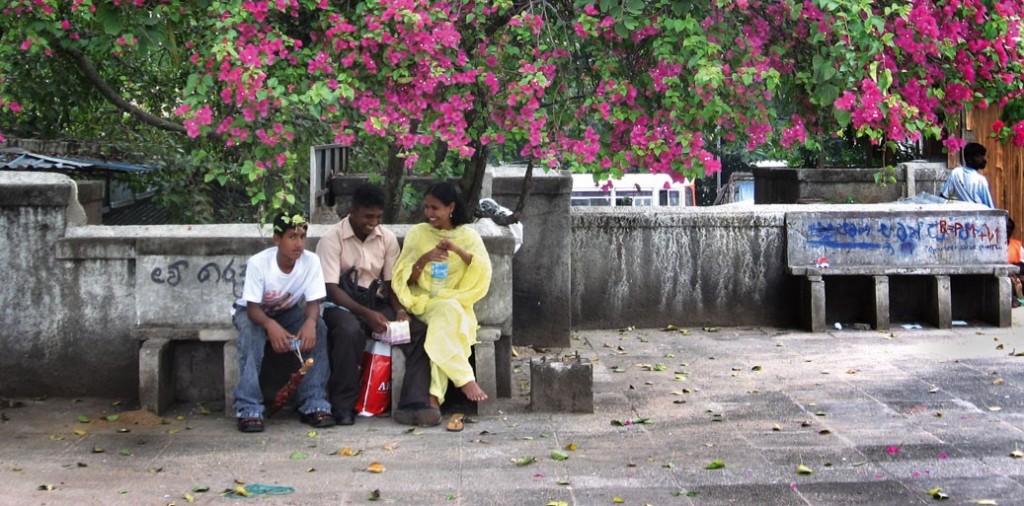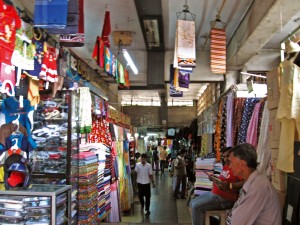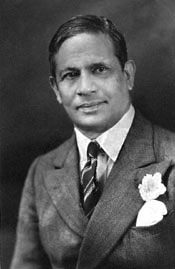-
A Spot of Green in Kandy
March 2008
Kandy is considered one of South Asia’s leading historical cities.The inner city consists of a beautiful lake and sits proudly beside the former royal palace that today plays host to the world-famous Temple of the Tooth. Kandy has also garnered UNESCO World Heritage City status, highlighting the importance of this metropolis.

The most important feature of Kandy, which gives it such a special character perhaps, is its topography. Lying in a steeply enclosed ‘bowl’ formed by a winding river valley, each contour of the landscape is exposed to the kind of breathtaking view that is often seen in early paintings of a city. The contours, gradients, and many hued roofs are all part of the perspective of the city today.
Kandy, while retaining its historical significance, is very much a dynamic and living city. The outer city is still growing, even seemingly bursting at its seams in some areas. It has become both a prosperous commercial city as well as a prime residential area.

A gypsy woman reading palms
Every city needs its recreational spaces and George E De Silva Park is Kandy’s spot of green in the city. Standing at the entrance to the City of Kandy, the development of this park began in the 1980s.
At the time, it was an insignificant, unimpressive patch of green that merely blended into the background. Alongside a war memorial and a statue of its late namesake George E De Silva (see box), a few temporary trade stalls also occupied this space. Aside from the annual commemorative ceremony at the war memorial, this area was mostly used by pedestrians, who found the park the shortest route from the main bus terminal to the bustling street of DaladaVeediya.
Given the potential of the space, the Kandy Municipal Council decided to redesign the area to incorporate permanent retail spaces which would generate much needed revenue for the Council. The task to redesign this space was entrusted to the State Engineering Corporation and two of the architects involved in this project were Geevaka De Soysa and HycinthRanasinghe.
The redesigned park consists of two levels. The street level is a flat space intersected by cement squares that hold trees and provide much needed shade to those visiting the park. Also on street level are a few shops that sell ‘fancy items.’
The basement level plays host to a number of shops, a majority of whom retail textiles, fabrics, clothing accessories, and also a communications centre. In keeping with the original vision of the Kandy Municipal Council, it is this basement level that continues to generate revenue, thereby allowing for the continued maintenance of the park.
According to Hycinth, “The lower level has absorbed the pavement hawkers who formerly pitched camp at DaladaVeediya, making this a formalised, throbbing commercial centre. This has vastly eased the congestion of DaladaVeediya.”
Geevaka when asked what he felt about the park as he sees it today said, “Upbeat, excited, the weathering on the walls, the untidiness, the smells, the energy of the place is totally transformed. People have made it their own.”

Traders at the park
He was commenting on the street level deck of George E de Silva Park. It was indeed a colourful scene. Pavement hawkers were busy hawking their wares and beggars and the homeless have occupied all the permanent fixed elements within the park benches and other spaces. Gypsy families were also to be seen practicing their trade of palmistry on pedestrians.
The basement level bears witness to a flurry of colour and activity courtesy of traders who have erected makeshift awnings and colourful cloth canopies, which shade the area and gently sway to and fro. Wandering through the narrow paths, you can be forgiven for thinking you are in the midst of a Middle Eastern souq.
The rejuvenation of the George E De Silva Park, from an underutilised patch of green to a thriving commercial space that blends into the park, has transformed this area of Kandy city. By creating this space, the architects have shown that it is possible to successfully merge commercial and recreational activity in a small, bustling Asian city.
George Edmond De Silva was a prominent politician in the Donomore era of Sri Lankan history. De Silva rose to become a respected criminal lawyer and later began his political career as a ward member of the Kandy Municipal Council. In 1931, he was elected as a member of the State Council.
During the race riots that began in 1915, De Silva fought against the injustices perpetrated on the Sinhala people. He established 250 cottage hospitals in rural areas and worked for the eradication of malaria by introducing the spraying of DDT. He established the first ayurveda hospital and encouraged the development of ayurveda in the district.
He was a man of great vision, a teetotaller who championed the cause of temperance. He was also one of the architects of adult franchise and among those responsible for the setting up of the Peradeniya University.
His funeral, held in Kandy in 1950, witnessed the presence of an estimated 200,000 people who came to pay their last respects to the man who fought for them. George E de Silva died a poor man. All the wealth he had amassed as a very successful lawyer was spent on his political campaigns. He left behind his partner in life, Agnes Nell.
“In this moment as in the hearts of the people for whom he lived and laboured, the name of George E. de Silva is enshrined.”
Born: 8.6.1879 / Died: 12.3.1950.
Insights, information and photographs by Archt Dinali Amaratunga.












